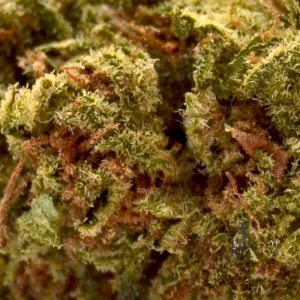Cannabidivarin CBDV … What Is It Exactly? See Here

Cannabidivarin (CBDV)
Kuh-nab-di-var- ən | Noun
A cannabinoid naturally occurring in the cannabis plant with a similar molecular structure to cannabidiol (CBD). Cannabidivarin (CBDV) is a non-intoxicating cannabinoid, meaning it doesn’t give you that delta 9 feeling or cause hallucinations. This cannabinoid interacts with the endocannabinoid system to regulate brain function. It also shows strong promise in the treatment of epilepsy.
“Cannabidivarin is a non-intoxicating cannabinoid that can transform into THCV when exposed to acidic conditions.”
“Did you know that cannabidivarin can potentially help with nausea?”
More About CBDV
It’s a cannabinoid that occurs in small amounts in the cannabis plant and is more common in landrace strains. Landrace strains are pure cannabis plants grown in their natural habitat without getting crossbred with other strains of the same species. They develop unique characteristics because they are isolated from other marijuana strains. Typically, this cannabinoid occurs more in plants with higher levels of CBD than THC. Such strains are most common in India, Pakistan, and Mexico.
Traditional cannabis breeders don’t produce enough of this cannabinoid for medicinal purposes, so scientists are using various methods to extract it from dried or living plants. Research shows that this cannabinoid can transform into THCV when exposed to acidic conditions. Like other cannabinoids, CBDV is available as a tincture, gel capsules, and can be dabbed and vaped as part of cannabinoid-rich concentrates.
Therapeutic Benefits of CBDV
This cannabinoid interacts with the endocannabinoid system to create a range of effects that are similar to the therapeutic properties produced by CBD. That said, this cannabinoid has its unique benefits and may help with seizures, Crohn’s, multiple sclerosis, and symptoms related to HIV/AIDS.
- One 2019 study published in the British Journal of Pharmacology investigated the effects of several cannabinoids on animals with Duchenne muscular dystrophy. Researchers discovered that both CBD and CBDV reduced inflammation, improved muscle quality, and slowed muscle degeneration.
- Another animal study found that this cannabinoid helped improve cognition, motor, and neurological functions, all linked to specific types of genetic disorders.
- One collaborative review suggested that CBDV could be a promising treatment for children with Autism Spectrum Disorder (ASD).
- Two studies, one published in Neuropharmacology (2018) and the other in the Journal of Psychopharmacology (2019) investigated this cannabinoid’s impact on an animal model of Rett Syndrome. Both studies noticed an improvement in general health, sociability, and brain weight.
- One 2013 study published in the British Journal of Pharmacology found that CBDV “may have therapeutic potential in reducing nausea.” Like THC, this cannabinoid suppressed nausea by influencing the CB1 receptor in the brain.
Final Thoughts
Cannabidivarin is a little known cannabinoid with a wide range of potential healing properties.








